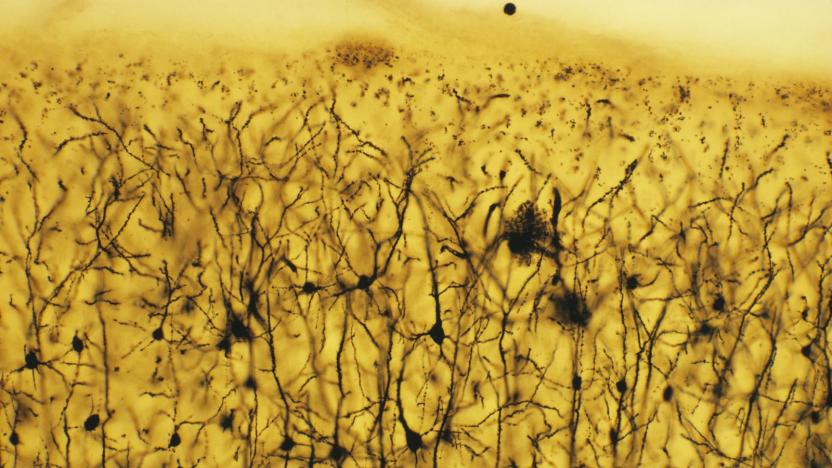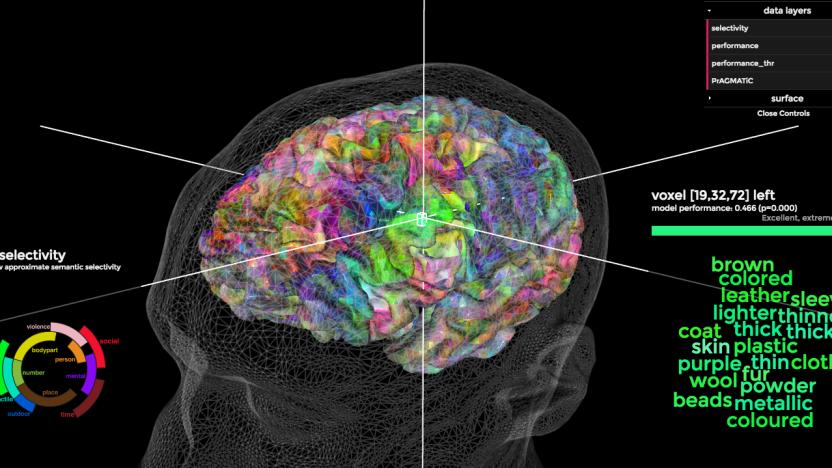CerebralCortex
Latest

Brain region that recognizes faces keeps growing in adulthood
Neurologists thought that your brain was basically set once you hit early childhood, but researchers from Stanford have discovered one part that keeps growing. Using new MRI imaging techniques, they found that the "fusiform gyrus," which is mostly responsible for recognizing human faces, keeps expanding well after other regions have stopped. The research could lead to more sophisticated cellular analysis of the brain and help patients with a disorder called "facial blindness."

Scientists use 'Moth Radio Hour' to map meaning across the brain
Researchers at the University of California, Berkeley took on the complex task of mapping meaning along the cerebral cortex, the thin membrane that stretches across the entire brain, and their results suggest language is much more complex than previously thought. Seven volunteers listened to The Moth Radio Hour, a program where people share emotional personal tales, while lying in a functional MRI machine that tracked how their brains responded to 985 specific concepts, Science News says. Researchers mapped the blood flow to 60,000 to 80,000 pea-sized regions across the cerebral cortex, resulting in a dense word map covering the entire brain. Turns out, some concepts showed up in several areas across the brain: "Top," for example, appeared in a section that handles clothing and one that deals with numbers.

Scientists reconstruct images from our brains, plan to do the same for dreams (video)
This is your brain. And now this is your brain on YouTube. By using functional magnetic resonance imaging (fMRI) software, researchers at UC Berkeley created a visual representation of what our brains see when we watch a TV or movie. It works as such: scientists show subjects random clips and measure the corresponding cerebral activity. After the computer "learns" what vids evoke what brain activity, scientists feed 18 million seconds of random YouTube videos into the computer program where it reconstructs a movie representation of neural happenings based on the hundred clips most similar to what it sees. Although the method currently only works with images actually viewed, the future goal is to recreate what people see in their dreams and memories -- which could give doctors major insight to the minds of the mentally impaired, stroke victims or those with neurological disorders. Inception in real life isn't exactly around the corner, but the implications of this new technology are pretty mind-blowing. See for yourself in the video after the break -- no totem required.

New research suggests our brains delete information at an 'extraordinarily high' rate
The mysteries of the brain may be virtually endless, but a team of researchers from two institutes in Göttingen, Germany now claim to have an answer for at least one question that has remained a puzzle: just how fast does the brain forget information? According to the new model of brain activity that the researchers have devised, the answer to that is one bit per active neuron per second. As Fred Wolf of the Max Planck Institute for Dynamics and Self-Organization further explains, that "extraordinarily high deletion rate came as a huge surprise," and it effectively means that information is lost in the brain as quickly as it can be delivered -- something the researchers say has "fundamental consequences for our understanding of the neural code of the cerebral cortex."



